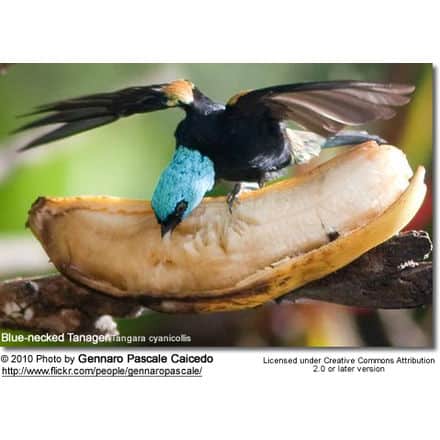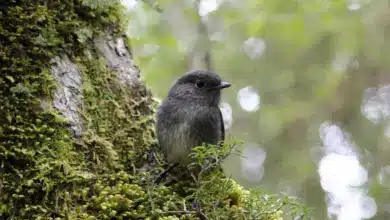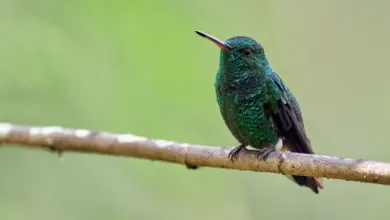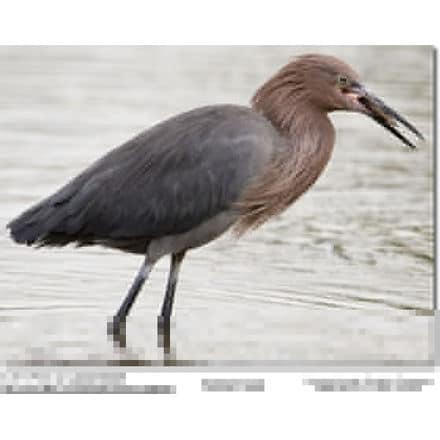Canarian Black Oystercatcher or Canary Islands Oystercatcher
The Canarian Black Oystercatcher or Canary Islands Oystercatcher, Haematopus meadewaldoi, was a shorebird endemic to Fuerteventura, Lanzarote, and their offshore islets (Islote de Lobos and the Chinijo Archipelago) in the Canary Islands, Spain.
Hockey (1982) showed that the Canarian Black Oystercatcher was a good species distinct from the African Black Oystercatcher Haematopus moquini, of which it was formerly considered a subspecies; these two were occasionally lumped as subspecies of the Eurasian Oystercatcher. Though this bird was known to naturalists for a long, it was considered a mere local population of the African Black Oystercatcher until 1913 (Bannerman 1913).
Description
The Canarian Black Oystercatcher was of similar size as its relatives, the African Black and Eurasian Oystercatchers, or about 40-45 cm (around 16.5 in); compared with the non-migratory African species, it probably weighed between 600-800 grams in life, with females being slightly heavier. Its bill was some 70-80mm long in males and markedly longer (around 80mm) in females; the tarsus measured around 50 mm, and the wings were around 250-265mm long, with males possibly at the upper range of that size (Bannerman 1963).
Its appearance was extremely similar to the African species, to the extent that even hand-held specimens can hardly be told apart except by direct comparison or measurements. Its bill was longer and its wings were shorter than in the African species, which is not known to occur north of Lobito, Angola however, at least in modern times. H. meadewaldoi had a glossy black coloration overall save for the whitish underwing bases of the primary remiges’ inner webs, but this may have not been present in worn plumage which also was duller (Bannerman 1963). Its bill, laterally compressed and with a blunt, lighter tip, and a narrow naked ring around the red eye were reddish orange, and the legs and feet were dark pink with ivory-colored nails. As usual in oystercatchers, it had no hallux and the second and third toes were connected by a small web (Álamo Tavío 1975).
The sexes did not differ in color; juvenile birds are unknown but probably had duller bare parts and some greyish-buff fringes to the feathers. The coloration of downy young is likewise unknown; these are generally brownish-grey above with dark striping to provide camouflage against predators such as gulls (Hockey 1996); considering the dark lava rock habitat of this species, they were probably fairly dark overall and had a dusky belly.
Habits
This was an all-year resident and seems to have never bred or even strayed outside the eastern Canaries at least in historic times. Information about its ecology is scant and usually second-hand or inferred from circumstantial information. However, even though conjectural, this information is consistent as the biology of oystercatchers is not very variable and the present species was a conspicuous bird well-known to locals. It was called cuervo marino (“sea raven”) on Fuerteventura, grajo de mar (“sea chough”) on Lanzarote, and corvino (“little raven”) on Graciosa. In addition, the local name lapero (“limpet-eater”) was also used, possibly on Alegranza. (Bannerman 1963)
The Canarian Black Oystercatcher was in all likelihood a bird of the rocky shore rather than sandy beaches; although it might have been driven from the latter as they were much more utilized by humans – which it tended to avoid (Bannerman 1963) -, what is known about its feeding habits indicates that had always been less commonly found in beach habitat. As with all oystercatchers, its diet consisted of small mollusks and crustaceans rather than oysters. Especially the limpets Patella candei, Patella piperata, and Patella cf. ulyssiponensis, as well as the African mussel Perna (perna) picta were favorite prey items (Hockey 1996).
Its vocalizations were given as repeated kvirr or kvik-kvikkvik (Álamo Tavío 1975), and the alarm call peepe-peepe peepe-peepe (Bannerman 1963). The birds appear to have been territorial in the breeding season and vagrant, but not occurring in large groups, at other times (Hockey 1987).
Reproduction
Like other oystercatchers, this species did not build a nest but laid its eggs in a scrape on the seaside; apparently, it chose the most deserted locations such as the mouths of barrancos (erosion gullies); eggs or nests were never recorded by researchers (Hockey 1987). Its courtship was reported to be peculiar, with two or three males joining in a “dancing” display, presenting themselves to the best effect (Álamo Tavío 1975). Once the females had chosen a partner, they remained monogamous, probably for life if the pairing proved successful as in most other species of the genus. The clutch size was undocumented but possibly there was only one egg; groups of three, but not four birds were commonly seen (Bannerman 1963). The eggs can be assumed to have been camouflaged as in its relatives (Hockey 1996); in the case of this species, they thus were probably rather dark overall, dull brownish grey with plenty of black, dark brown, and dark purplish splotches and scribbles. Egg size was probably about 60 x 40 mm on average (Bannerman 1963).
The breeding season is also unknown, but from observations of courtship and birds in laying condition, it started around April. Comparison with its relatives suggests that incubation lasted for around 30 days, maybe less (23 days: Álamo Tavío 1975), with the chicks taking around 35 days again to fledge. The three-bird groups started to occur in more populated regions in June (Bannerman 1963). Females took probably 3 years to reach sexual maturity and males 4; this species can be assumed to have been long-lived like other oystercatchers, which not infrequently live for 20 or even more than 30 years (Hockey 1996). Unusually, the birds seem to have molted after breeding season; 2 females shot in Aprim had worn plumage (Bannerman 1963).
Extinction
This bird was last collected in 1913, and local fishermen and lighthouse keepers reported it had disappeared around 1940 (Hockey 1996), after a prolonged decline starting probably in the 19th century (Hockey 1987). It first – until the early 20th century – seems to have disappeared from Lanzarote, in accord with the general pattern of Canarian extinctions. By 1913, it was not reported to have been found outside the Chinijo Archipelago and Islote de Lobos in recent times (Bannerman 1963).
It is now considered extinct because extensive surveys between 1956/57 and the late 1980s failed to find any evidence of the Canarian Black Oystercatcher survival. It was officially declared extinct with the publication of the 1994 IUCN Red List.
There have been sight records of altogether 3 black oystercatchers from the coast of Senegal, in 1970 (Jarry in Hockey 1987) and 1975 (Ziguinchor Region: de Ridder 1997), but these are very unlikely to refer to this species which was by all accounts a resident bird never recorded outside the Canaries archipelago on other occasions. Two fairly convincing records from Tenerife – apparently in July 1965 or 1968 at Puerto de la Cruz (Bannerman 1969), and in 1981 at El Médano (Kraft in Hockey 1987) -, on the other hand, could indicate that a small population managed to persist on uninhabited islets until the early 1980s, it is interesting to note that second-hand records from Tenerife also exists for the mid-19th century (Bannerman 1963). The Senegal records are nonetheless puzzling, as none of the black species of oystercatcher are known to occur even in the general area; melanism is known to occur occasionally in the Eurasian Oystercatcher (Stresemann 1927) which winters in the region; possibly the Senegal birds were such specimens.
Over-harvesting of intertidal invertebrates and disturbance by people was probably the main underlying cause of its decline (Hockey 1987), although predation by rats and cats has also been implicated. In addition, its eggs were said to be of exquisite taste and consequently much collected (Álamo Tavío 1975). Although oystercatchers generally have adapted to the commonplace loss of the first egg in their clutch to predators and readily re-lay lost eggs, if the present species’ clutch was indeed only one, egg collecting would have had a major impact: collectors would have to disturb more breeding pairs per number of eggs gathered. Also, adult birds were opportunistically shot together with more plentiful migrant waders in the winter months and sold as salmuera (preserved in brine) (Álamo Tavío 1975). It is unknown how far-reaching the direct impact of unsustainable agriculture practices, which led to widespread desertification especially of Lanzarote by the end of the 19th century (Hockey 1987), was. It might have altered local climate regimes, leading to increased pressure on intertidal habitats e.g. by increased flash floods causing silting of barranco mouths and declines in invertebrate populations there.
There exist only 4 specimens (Bannerman 1963), three collected by Meade-Waldo in the BMNH and one collected by Bannerman in the World Museum Liverpool. The type specimen BMNH 1905.12.22.323 is a female shot at Jandía, Fuerteventura, on April 7, 1888 or 1889 (Bannerman 1963). About the same time in the next year, a couple was taken on Graciosa. From there is also the last known specimen – the male now in Liverpool -, shot on June 3, 1913. It is not known what became of the specimen shot in April 1852, apparently also near Jandía, by Carl Bolle (Bolle 1855).




